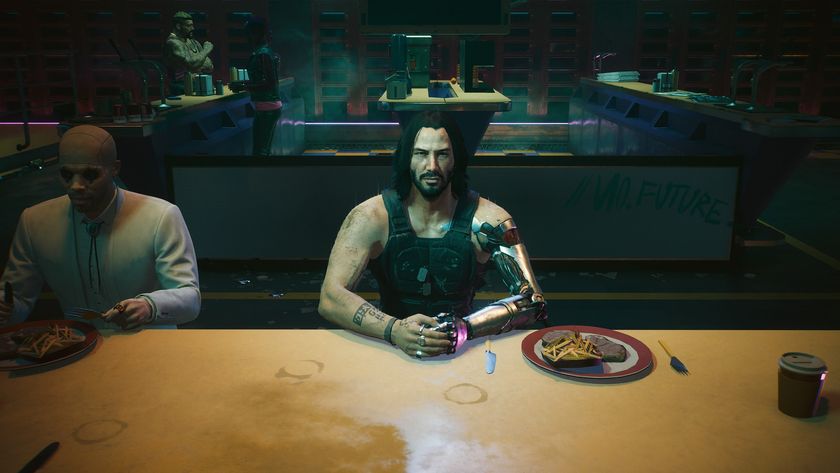Four veteran combat designers on how to make a battle system memorable
Devil May Cry 5, Nier Automata, Assassin's Creed Valhalla, and Jedi: Fallen Order devs reveal the tricks of the trade
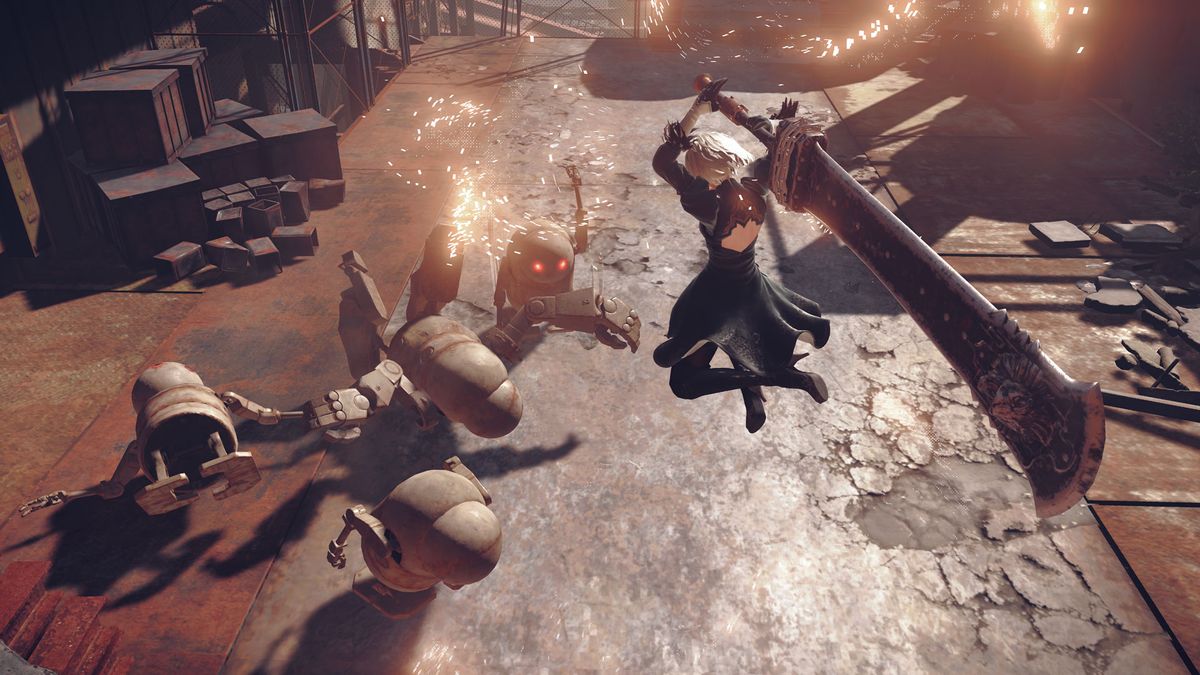
My attempts to define what a combat system is continually escapes me. Is it a set of interconnected abilities? Is it the system whereby players upgrade their in-game characters? Is it a core ingredient of a game that sublimely supports the story? Or is it all of the above – a beast that's impossibly hard to tame and bend to your will, but a thing nonetheless that will define any action-orientated game?
When you think of an "action" game, you might think of Nier Automata's smooth brilliance and finesse, or you might think of Assassin's Creed Valhalla's bloody melee bouts. Alternatively, Devil May Cry 5's rapid response-based button presses might spring to mind, or Star Wars Jedi: Fallen Order's glistening, gliding lightsabers. Whatever the case, they're four titans of the action genre. But what do its lead combat designers think a battle system should do to make itself memorable for the player? What factors rise above all else throughout development to provide a bedrock for the rest of the game to flourish?
Four approaches to building a memorable combat system
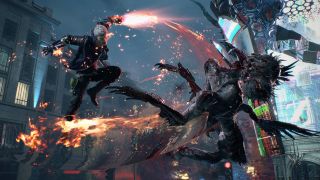
To answer that first question at least, Devil May Cry veteran Hideaki Itsuno reckons it's all about difficulty. Itsuno explains that, in order to make a battle system "memorable" to the player, the developer needs to present the player with a difficult scenario. Through this, Itsuno believes, the player will analyze the situation and come up with their own strategies, so they're constantly utilizing the parts of the game's "toolset" with which they feel the most comfortable.
Star Wars Jedi: Fallen Order and former God of War lead Jason de Heras approaches the challenge with a similar mindset. "A combat system consists of an interconnected set of rules which creates an engaging dynamic between the player and enemies," says de Heras, adding that "a memorable combat system exploits and stress tests these rules to challenge the player in a wide variety of ways over the course of an entire game."
Assassin's Creed Valhalla's associate game director, Gareth Glover, believes this question is "sadly one with no real definitive answer." Glover instead points to several key aspects, including the flow of combat aligning with your game's character, combat moves feeling impactful, and a well-balanced progression system. Only when all of these individual components have been integrated and balanced, Glover says, can your combat system approach being memorable for a player.
With Valhalla, Glover looked outside the game's core systems to create a memorable combat loop. PlatinumGames veteran Takahisa Taura takes this philosophy a step further. The Nier Automata combat lead prefers to have the game's storyline develop during battles, boss characters attacking in time with the game's music, and enemy attacks impacting the game's user interface. The heart of a "memorable" combat system, Taura believes, is the confluence of core combat mechanics and systems that exist outside of combat – a combination that's evident in so many of PlatinumGames' releases.
Tricks of the trade
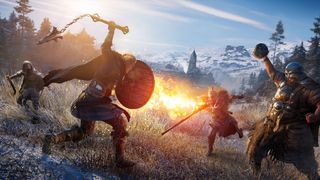
Something plenty of combat designers love sneaking into games are "tricks", hidden aspects that the game doesn't communicate to the player but will ultimately impact their experience in combat. A prime example is Doom's final few health points of the Doom Slayer secretly counting for far more than the value flashing up on the screen, to make the player feel like they're walking a fine line between life and death. How do these four combat veterans utilize tricks to through combat to help guide the player and better their experience?
Sign up to the 12DOVE Newsletter
Weekly digests, tales from the communities you love, and more
For Glover, these "tricks" primarily revolve around the foes attacking Eivor in Valhalla. "We use some light ‘tricks', for instance to manage the number of enemies attacking the player, their positions, and the timing of their attacks," says the director. These are two key ingredients which make combat much more manageable for the player, even though it's never explained outright to them that this is happening.
Itsuno takes a pretty similar approach. The Devil May Cry 5 director explains that he tries as hard as possible to limit the ways a player can die via mistakes of their own making. Therefore, Devil May Cry 5 does "things like adjusting off-screen enemy attacks and the hit detection for dodge moves," says Itsuno. The game director says being overpowered is just plain boring, but there's an incredibly tough line to walk in making the player feel powerful, while also keeping them on their toes with tough encounters.
For Taura though, it's all about creating a "comfortable" experience that players can "pour their hearts into." The gameplay veteran points to tiny tricks interlocking with one another, and in a way that the player may even be able to recognise and anticipate them. It might be something as simple as the game's background music transitioning automatically to a combat track once the punches start flying, or a combat system that “lets you catch the enemy even without using a lock on system.” Additionally, Taura buys into Glover's method of putting a hard limit on the amount of enemy attacks pelting the player, and Itsuno's beliefs of restricting off-screen attacks from enemies the player can't see.
Fallen Order lead de Heras, meanwhile, ascribes to empowering the player through tricks. Invulnerable frames of invincibility, for example, can be utilized to make player mistakes feel more forgiving, but use this generously and it risks making enemy movements and behaviour obsolete. “There's a delicate balance of feeling overpowered versus giving the player adequate tools to feel skillful and achieve mastery through their developer understanding of timing and rhythm." De Heras points to time manipulation tricks, like slowing down the game upon a successful parry, as being key to making a game's combat system more digestible for any player.
Back to basics
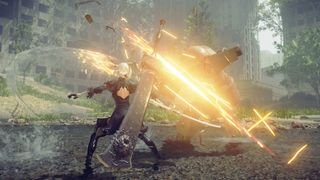
For each of these games, combat is very much front and center. You don't pick up Devil May Cry 5 to visit the local tourist attractions in Redgrave City, nor do you buy Star Wars Jedi: Fallen Order in the hopes of forgoing lightsabers. Considering combat is such a focal point of these action games, how do said combat systems change over the course of development? A game can realistically have a development period of above four years, so what change does the core combat loop see during this time?
For Nier Automata, the answer to this question is very little. Taura explains that the core combat system wasn't developed through trial and error, but instead quickly worked up in a relatively short amount of time. After producing a combat system that felt pretty "orthodox" (a word you wouldn't normally associate with Automata), Taura and PlatinumGames brought out other distinguishing elements of the combat in harmony with Automata's wider themes, “by harmonizing that system with the other elements.”
As you can probably imagine, Capcom took an action-first approach to Devil May Cry 5, producing and refining the core combat systems before investing heavily in other aspects of the game. Itsuno deliberately points to other elements of Devil May Cry 5, like the story, level design, and puzzles, “need to be designed in tandem with the action,” according to Itsuno, and so if the combat loop were to change in any significant way during development, it would mean elements like these would have to be completely discarded and restarted from scratch.
That's not to say the finer points of the action system can't change, however. As de Heras points out, it's really the job of the combat designer to fine tune various numbers and values to achieve a desired balance and feel. The combat veteran specifically points to the "size" of the parry window changing during development of Star Wars Jedi: Fallen Order, even down to the milliseconds, in order to prevent the player from feeling too powerful. But even this can have a knock-on effect: how does a small parry window pair with an incredibly fast enemy attack? This is just one such area that needs to be continually iterated upon and changed throughout the course of development, de Heras explains.
Glover, meanwhile, is in a slightly different situation than all the other designers here. The game director has an established post-launch period to work with, where Assassin's Creed Valhalla's expansions have introduced significant changes to its combat system with abilities and skills. Glover sees this post-launch period as an extension to further iterate Valhalla's combat, adding in not just new skills and abilities, but armor sets and weapons with new perks and effects. “We use this opportunity to continuously balance and improve the core combat systems and experience, but also to add new combat ingredients like new ‘player skills’ and ‘abilities’ that offer new options and tactics in combat,” says Glover.
Tricky tutorials

So how does one tutorialize all this? Taking years upon years of changing designs, base philosophies, differentiating abilities and skills, and bundling them all up in a package to the player is a monumental challenge. But then again, do you even need to present the player with every combat option and ability all at once?
Taura, for one, spends plenty of time considering this issue. The PlatinumGames dev actually thinks a tutorial is best when it's integrated into the game's story, and allows the player to enjoy something else, for example character building and storytelling, while the tutorial rolls on. “I believe a better method would be something that allows the players to learn gradually through a tutorial which is not just a part of the game system, but is also well integrated into the game’s setting and story,” the PlatinumGames veteran adds.
De Heras thinks introducing a new move or mechanic in a context where they're relevant primes the player to understand the importance of said ability. Itsuno likens playing a game to learning how to ride a bicycle. The DMC pioneer believes it's vital that players know the basic controls and movements, so they can go full steam ahead in the game without any interruptions to the atmosphere and tension.”But in reality, players don’t want to have to study up on a game – they want to get right into it as soon as possible,” Itsuno says. “We have to try to spread out not just control tutorials, but the way we teach them about the game’s setting as well so they can understand it step by step, hopefully while keeping good pacing and not breaking immersion too much.”

All throughout January, 12DOVE is exploring the biggest games of the new year with exclusive interviews, hands-on impressions, and in-depth editorials. For more, be sure to follow along with Big in 2022.
Hirun Cryer is a freelance reporter and writer with Gamesradar+ based out of U.K. After earning a degree in American History specializing in journalism, cinema, literature, and history, he stepped into the games writing world, with a focus on shooters, indie games, and RPGs, and has since been the recipient of the MCV 30 Under 30 award for 2021. In his spare time he freelances with other outlets around the industry, practices Japanese, and enjoys contemporary manga and anime.
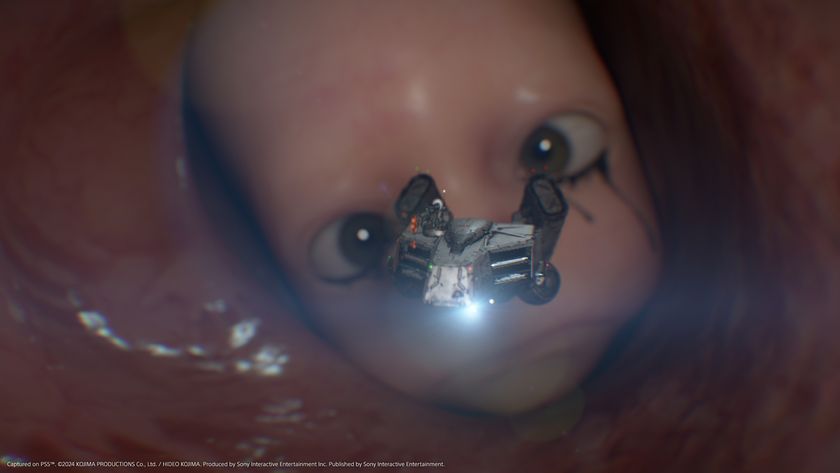
Death Stranding 2 draws ever closer as Hideo Kojima shares emotional behind-the-scenes update from "important scene" that wrapped recording for 6 voice actors at once
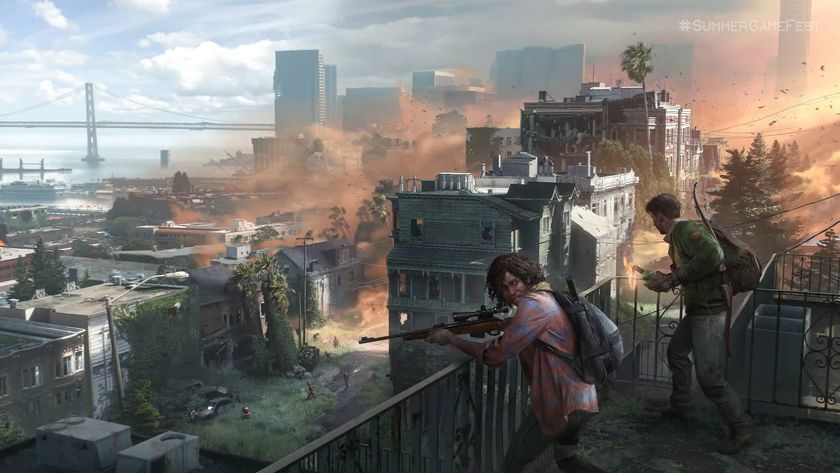
Cancelled The Last of Us Online game was "great," but former PlayStation exec says Naughty Dog had to scrap it after Bungie told them how much work it would be
Most Popular







